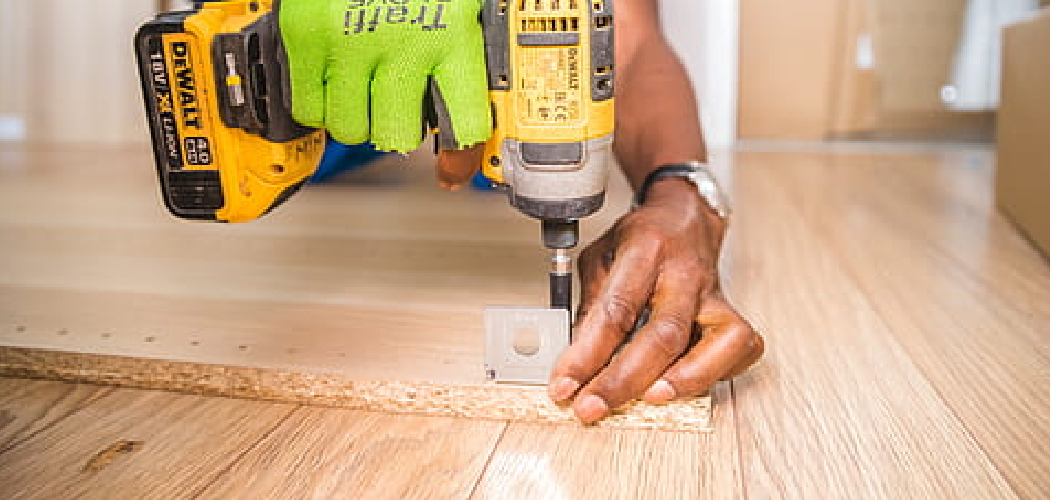Are you looking to create a beautiful wooden sculpture or relief? With the right tools and techniques, anyone can learn how to carve wood with a drill. From understanding the different types of drills and bits needed to follow a pattern effectively, these essential tips will help you transform an ordinary piece of lumber into an extraordinary work of art!
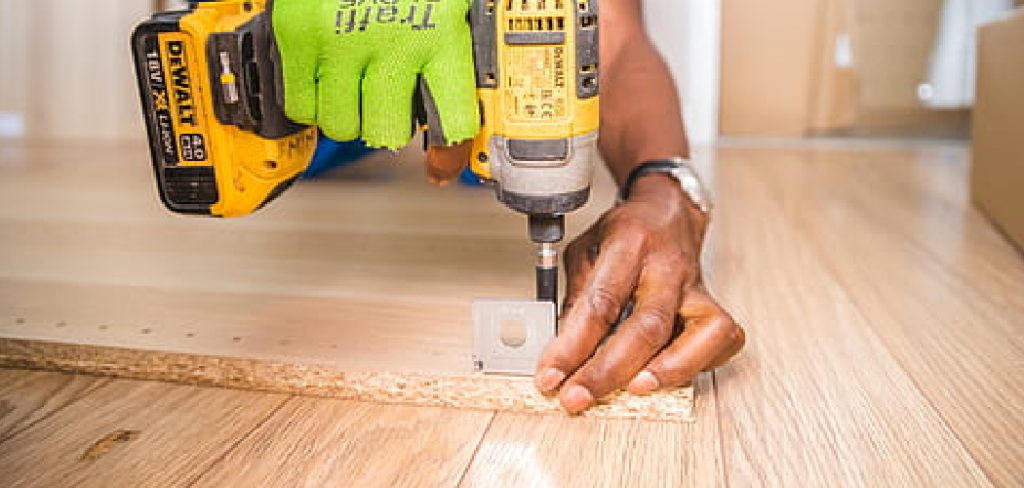
In this blog post, we’ll be discussing various methods for using your drilling power tools to customize pieces of wood into custom-made carvings that are truly unique. Let’s get started!
Step-by-step Guidelines on How to Carve Wood With a Drill
Step 1: Select the Right Drill and Bit for Your Project
The type of drill you use will depend on the type of wood you’ll be working with. For softer woods like pine, cedar, and mahogany, a corded drill with a standard bit is the right tool for the job. But for harder woods like oak and walnut, you’ll need a cordless drill and special drill bits, such as Forstner bits. It’s important to choose the right drill and bit for your project, as this will determine how effective and smooth your carvings will be.
Step 2: Choose the Appropriate Speed Setting
Different types of wood require different drill speeds when carving. Softwoods like pine and cedar will require a lower speed, while harder woods like oak and walnut need a higher speed. You can adjust the speed setting on your drill by adjusting the throttle or using a variable speed switch. So make sure to select the right speed setting before you start drilling!
Step 3: Choose the Right Drill Bit for Your Project
The drill bit you use is also important when you’re carving wood with your drill. For intricate carvings in hardwoods, you should use a Forstner bit or an auger bit. But if you’re just drilling holes into softer woods, then a standard twist-type bit should be sufficient. That said, it’s always best to use the right drill bit for your project.
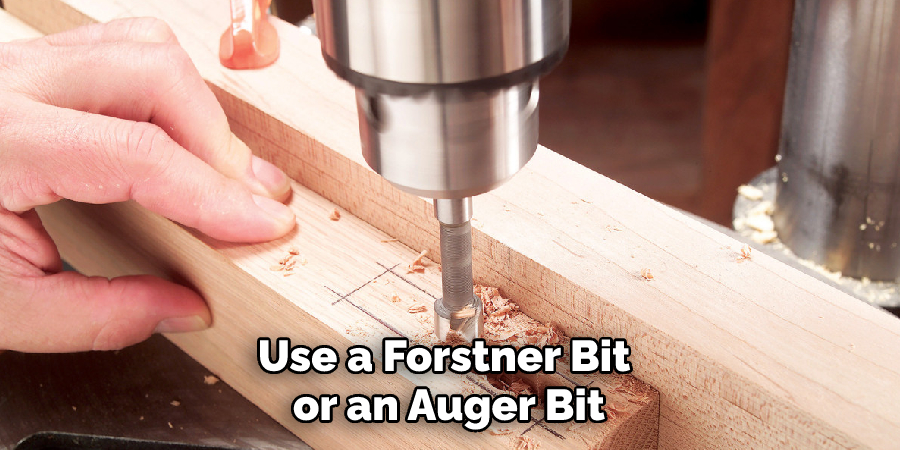
Step 4: Prepare the Wood You Want to Carve
Before you start drilling into your workpiece, make sure it’s properly prepared by sanding any rough edges and cleaning off any debris. This will ensure your workpiece is smooth and ready to be carved into. It also helps to make sure your drill bit won’t get clogged with debris while you’re working. But if you’re not sure about how to do this, it’s best to consult a professional before beginning.
Step 5: Outline Your Pattern on the Wood
Once you’ve prepped the wood, it’s time to outline your design on its surface. You can do this either freehand or by tracing a pre-existing pattern onto the wood using carbon paper. So make sure you have a plan in place before you begin drilling! You may also want to practice drilling on a scrap piece of wood before starting.
Step 6: Drill Holes At Each Point of Your Design Outline
Using your chosen drill bit, start drilling holes at each point along the design outline you marked on your workpiece. Remember to keep an even distance between each hole so that all parts of your design are uniform in size and shape when finished. It’s also important to pay attention to the speed setting you chose in Step 2.
Step 7: Connect the Holes With Straight Lines
Once all of your holes are drilled, begin connecting them with straight lines. You can use a piece of chalk or a pencil to draw these lines on the wood and make sure they’re even. It’s important to keep in mind that you may need to redo this step if the lines don’t come out looking the way you want them to.
Step 8: Carve Out the Shapes Between Your Lines
Now that you have an outline for your design, it’s time to start carving out the shapes between each line. Use your drill at a low-speed setting and gently carve away at each shape until it’s complete. You may also want to use a small chisel or knife to help with the carving if necessary. It’s important to work slowly and carefully in order to achieve the best results.
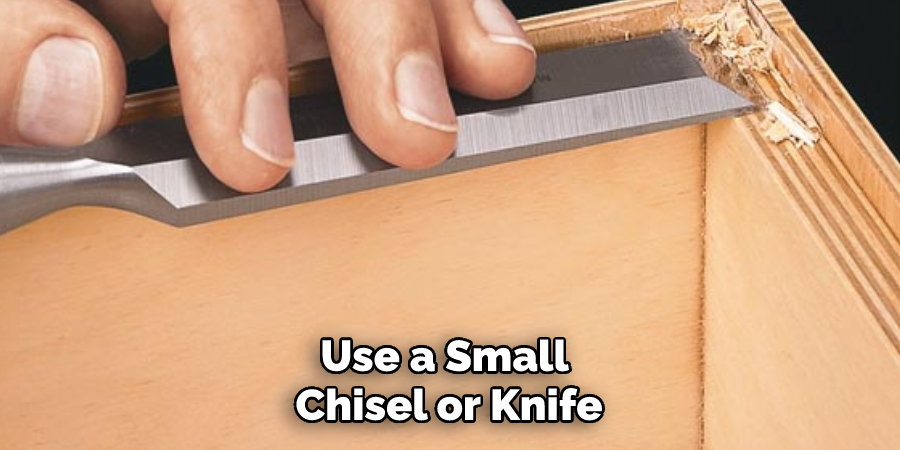
Step 9: Smooth Out Any Areas That Appear Rough or Uneven
Once you’ve finished carving out your design, make sure to take a few moments to smooth out any uneven or rough areas with sandpaper. This will give your piece a more polished look when finished. But it’s important to be careful when sanding, as you don’t want to ruin the design.
Step 10: Apply Finish To Protect Your Carving
To help protect and preserve your carving, be sure to apply a finish such as lacquer or shellac before displaying it. This is especially important for carvings that are going to be placed outdoors or in high-traffic areas where they could get scratched or damaged easily. It’s also a good idea to reapply the finish every few years to ensure your carving remains in pristine condition.
Step 11: Display Your Carved Wood Piece With Pride!
Now that you’ve finished the carving process and applied the necessary finishes, it’s time to show off your masterpiece! Place your carving in a prominent spot and enjoy the admiration of family and friends. This will help ensure your hard work is appreciated for many years to come. You can also use the same techniques to carve other materials such as stone, metal, and plastic.
Step 12: Clean Up All Tools After Use
It’s important to remember that you should always clean up after yourself when working with tools. Make sure to wipe down all drill bits, drill heads, and other tools that were used during the carving process before putting them away. That way, they’ll be ready to use again the next time you need them.
Remember to also clean up any wood shavings or residue left on your work surface.
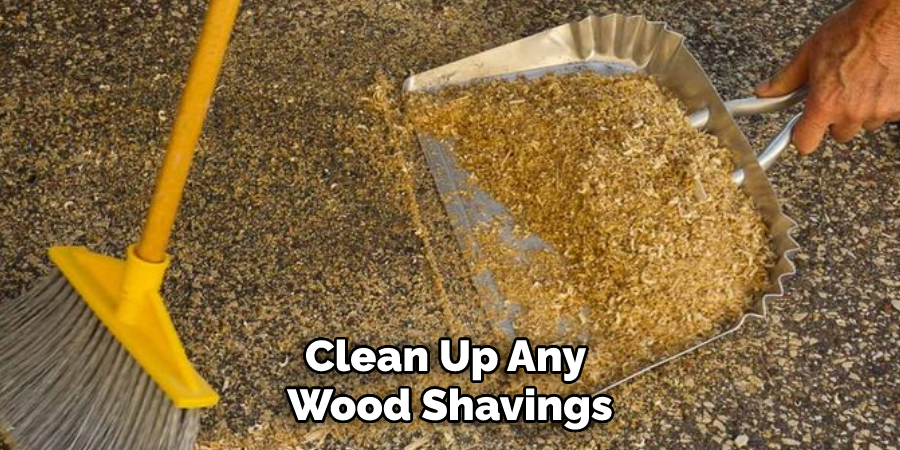
We hope this guide on how to carve wood with a drill has been helpful for you in creating pieces of art from ordinary pieces of wood. With patience, practice, and these step-by-step instructions, you can make beautiful carvings that will truly be one-of-a-kind!
Good luck and happy carving!
Pros and Cons
Pros:
- Easy to learn and can be done with minimal supplies
- Provides a creative outlet for the carver
- Can produce beautiful works of art from ordinary pieces of wood
- It is an affordable hobby that anyone can take up
Cons:
- Carving with a drill requires patience and practice to get it right
- Work can easily be ruined with one wrong move
- It can produce a lot of wood shavings and dust that needs to be cleaned up afterward.
- It can be dangerous if the correct safety precautions are not taken.
Do You Need to Use Professionals?
For some people, wood carving is a hobby they do on their own. If you have the patience and are willing to learn from mistakes, then it may be something you can do yourself. However, if you’re looking for something more complex or difficult, it may be best to hire a professional carver who has experience with these projects.
They can help ensure that your project will come out looking great and will last a lifetime.
Ultimately, it’s up to you to decide whether or not you need the help of a professional when it comes to wood carving with a drill. If you do choose to use one, make sure they are knowledgeable and experienced in the field, as this can make a big difference in the quality of your finished product.
Frequently Asked Questions
Q: Can I Use a Drill to Carve Other Materials?
A: Yes, you can also use the same techniques for drilling and carving materials such as stone, metal, and plastic. The key is to make sure you have the right drill bit for the material you’re working with and to always use the appropriate safety gear.
Q: How Long Does It Take to Carve Wood With a Drill?
A: How long it takes to carve wood with a drill depends on the complexity of your design, the material you’re working with, and your own skill level. Generally speaking, it can take anywhere from a few hours to several days to complete a detailed carving.
Q: How Do I Protect My Carved Wood Piece?
A: To help protect and preserve your carved wood piece, be sure to apply a finish such as lacquer or shellac before displaying it. This will also give it a polished look. It’s also a good idea to reapply the finish every few years to ensure your carving remains in pristine condition.
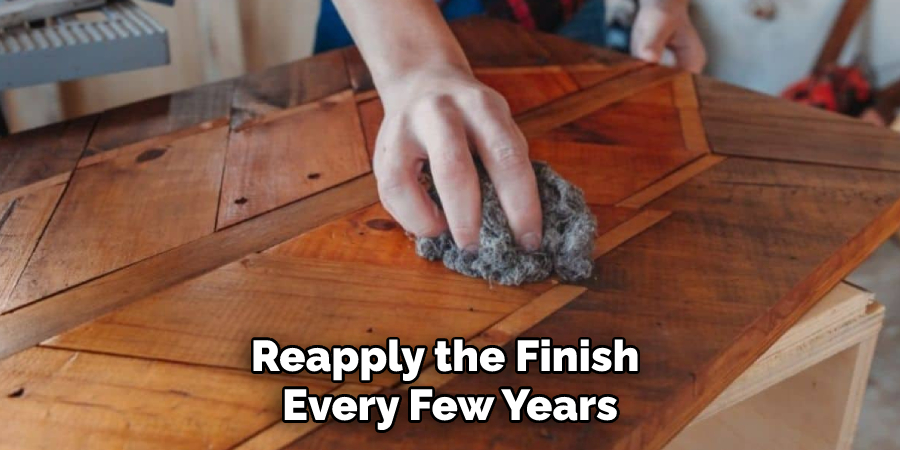
Conclusion
Crafting wood with a drill does not require expensive or complicated tools – it only requires knowledge and patience. After reading this article on how to carve wood with a drill you have the knowledge you need. All in all, the most important thing to remember is that the success of this type of woodworking relies heavily on practice and experimentation.
With regular practice, you will soon be able to master the skill of crafting wooden works of art easily and swiftly. And don’t forget that much like anything else, being consistent and patient are essential parts of carving wood with a drill.
Keep practicing, keep learning, and take pride in your finished product – these three components are absolutely necessary in order to become successful at carving wooden pieces using a drill. Congratulations – you are now officially prepared to create beautiful pieces of art from wood! Happy carving!

